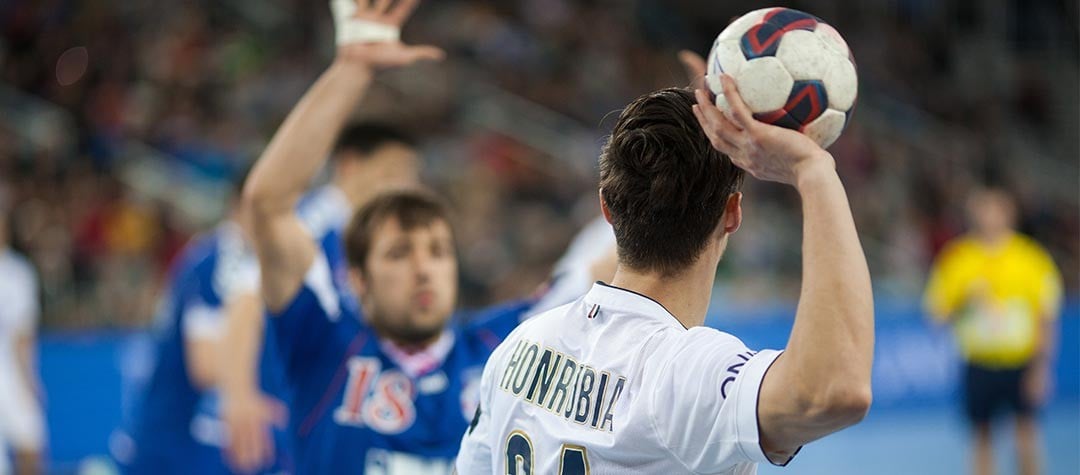Handball is a great sport for boosting fitness levels and agility, so if you’re looking for the basics to this fast paced sport you’re in the right place.
Handball is a fast-flowing game. The aim is to is to throw the ball into the opponent’s goal as many times as possible within two 30-minute periods of play. It requires quick thinking and lightning reflexes as players are only allowed three steps with the ball, with a three second time limit.
The players work together, passing and dribbling the ball up the court in an attempt to score a goal. The fast pace of the game results in many shots being taken, and it is not unusual for more than 20 goals per side to be scored in game. To ensure everything runs smoothly, there are 4 officials per match, the timekeeper, scorekeeper and two referees who stay close to the action.
The sport requires strength, speed and agility and has been compared to being a cross between football and basketball, although the players (other than the goalkeeper) are not permitted to kick the ball.
Handball is often referred to as Olympic handball so as not to be confused with other completely different versions of ‘handball’ which involve the use of hitting a small ball with the hand in a walled court.
Health and fitness benefits of handball
Playing handball has a number of health and fitness benefits, including the following:
- Improves arm muscles and upper body strength.
- Develops agility of hands and feet, with sudden changes of pace and direction required.
- Boosts the body's flexibility.
- Improves mental focus and self-confidence.
- Provides the body with a good cardiovascular workout, feeding more oxygen to the muscles via the bloodstream.
Playing positions
Handball positions consist of a goalkeeper, two fullbacks, two wingers, a circle runner and a center. Here's the lowdown on these handball playing positions.
There are 14 players in each team in handball, with seven on the pitch at any one time.
The playing positions in handball are as follows:
Goalkeeper — the player who defends the goal with just about every part of the body! The goalkeeper is the only player who can touch the ball with their feet.
Centre — a creative handball player who directs play in both defense and attack. Also known as the ‘playmaker’ and sets up the tactics and the players in shooting positions.
Left and right backs — usually the largest players on the handball team. When defending, they try to block shots, and in attack they are the long-range handball shooters.
Circle runner — the creative force in attack and disruption to opponents when defending. The circle runner is quick and gets in among opposing defenders to either create openings for teammates or to get into a good scoring position themselves.
Left and right wingers — the fast players who patrol the sides of the court. They counter opposing wingers and in attack look to create openings for others, or shoot from the more difficult angles.
Substitutes — substitution is allowed at any moment, without limit and without time stoppage. There are seven substitutes on the sidelines for each handball side. But a substitute can’t play until the player they are swapping for is off the court.
How the sport came to be
The origins of the modern game of handball can be traced to northern Europe, primarily Denmark, Germany, Norway and Sweden. Varying sets of rules were set up in both Denmark and Germany. Over time these were improved upon and eventually led to the first international matches – Germany and Belgium men’s teams meeting in 1925 under this code of laws.
It’s incredibly popular in the likes of Spain, France and Croatia, all of which have professional male and female teams. Despite its history, the men’s game wasn’t implemented into the Olympics until the 1936 Berlin games. The women’s game took even longer despite their skill level, eventually being introduced in Montreal in 1976.
Today, the sport is now played in over 150 countries, including variations.
How to get involved in playing handball
Interested? Handball develops athletic skills, promotes teamwork, and increases fitness and general well-being. Although not a major sport, most gyms or leisure clubs will most likely have classes or handball events for everyone to get involved in. The fast paced game is a great way to develop your fitness but also expand your social circle.
Picture Credit: Ivica Drusany / Shutterstock.com















